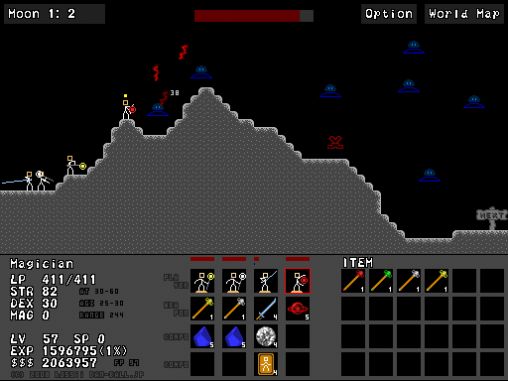

The 3e Ranger, as a result, was considered one of the weakest classes, if not THE weakest.ģ.5's revision to the Ranger gave it a solid boost, with favored enemies that scaled MUCH better and removed the "pick the strongest enemy you're going to face at Lv. Also, all classes got the ability to use Stealth to a certain degree, making the Ranger less special in that category, and its spell list left a lot to be desired.
STICK RANGER WALKTHROUGH FREE
It got "free" dual-wielding, a carryover from 2e, but dual-wielding was a weak style in 3e in general, and the Ranger's free dual-wielding never got any better. Although, the 3e Ranger wasn't effective at much of anything, really. It also, for the first time, removed the alignment restriction, because it was determined that a character shouldn't need to be Good-aligned to be an effective tracker.

In 3e, the Ranger could select multiple favored enemies as they leveled for the first time, although the way those damage bonuses scaled was ineffective (you basically had to commit to a strong enemy type you most likely never faced at 1 st level to max out that bonus). The 2e Ranger was considered mostly solid in performance (it was still mostly a Fighter-plus, after all, minus weapon specialization/mastery), if not uninspired and dissonant in its design. The stealth parts of the Ranger remained, as did the alignment restrictions and the Druid spells (the Mage spells were removed).

The Ranger's Giant-killing abilities were extended instead to a choice of "racial enemy" or "favored enemy," which made the 2e Ranger more effective against a certain type of foe, although not NEARLY as much so as the 1e Ranger was against Giants, being just a +4 bonus to attack (not damage) rolls. Ignoring the fact that Drizzt dual-wielded because he was Drow (who had an enhanced ability to dual-wield in 1e), the makers of 2e decided instead to give that ability to the Ranger, thus setting the stage for the next few renditions of that class as THE dual-wielding class - an arbitrary addition to its identity. Because right before the release of 2e, a Drow Ranger named Drizzt Do'Urden, the ultimate Mary Sue of the Realms, was renowned for his ability to dual-wield scimitars. The 2e Ranger was something of a curiosity. It also had to be of Good alignment or risk losing all its abilities (a convention most closely represented now by the Oath of Ancients Paladin). Its combat skills were also as solid as ever, capping out at the same number of attacks as the Fighter, but just at a couple levels later. It also was especially effective at killing Giants (with HUGE damage bonuses against them), had the stealth abilities that's still associated with the class to this day, and was pretty much impossible to catch by surprise and was often effective at having the party get the jump on enemies. The 1e AD&D Ranger was able to cast low-level Magic-User spells (in addition to Druid spells) and use all the items that a Magic-User could. The other details have varied from edition-to-edition, to the point that it's often debated as to what a Ranger is really supposed to be. It was loosely based on Aragorn from Lord of the Rings, originally. The common motif about the Ranger in D&D is a skilled hunter, tracker and woodsman, most at home on the fringes of civilization and the first line of defense against threats from the wilds. UA:X - Unearthed Arcana (title of article) This guide takes from the following sources: It's a rare rating that denotes something that is so good that you must take it, or you can't call yourself optimized.

An option you should strongly consider above most others. It definitely helps your character in the majority of cases. You're not hurting your character by taking this, and it might even help in some situations, but there are better choices.īlue is a good choice. It might be useful in corner-case situations, but overall it's not worth the investment.īlack is average. A choice that either adds nothing of value to your character or might even actively hurt it. This guide will use the following ratings:


 0 kommentar(er)
0 kommentar(er)
